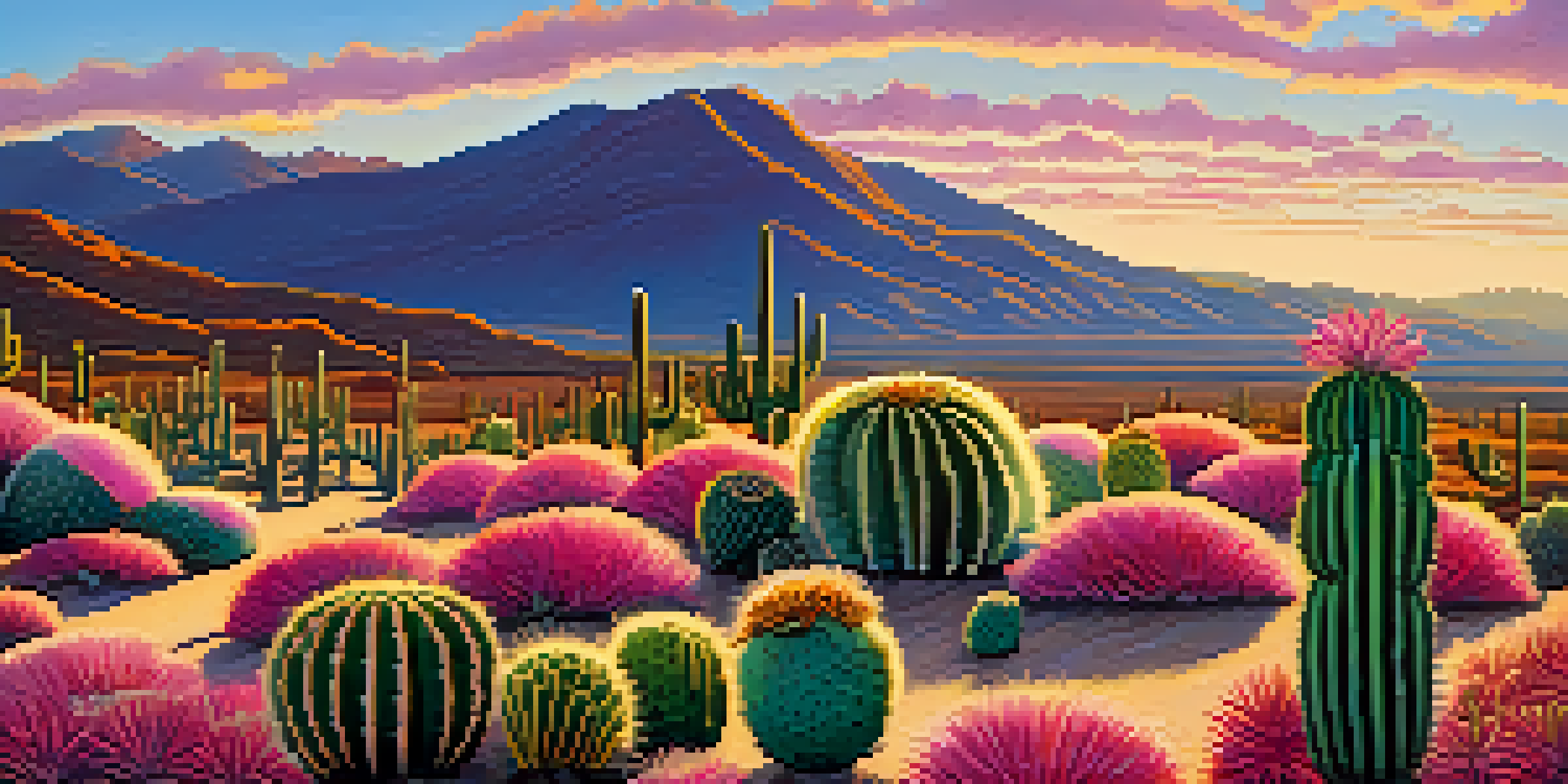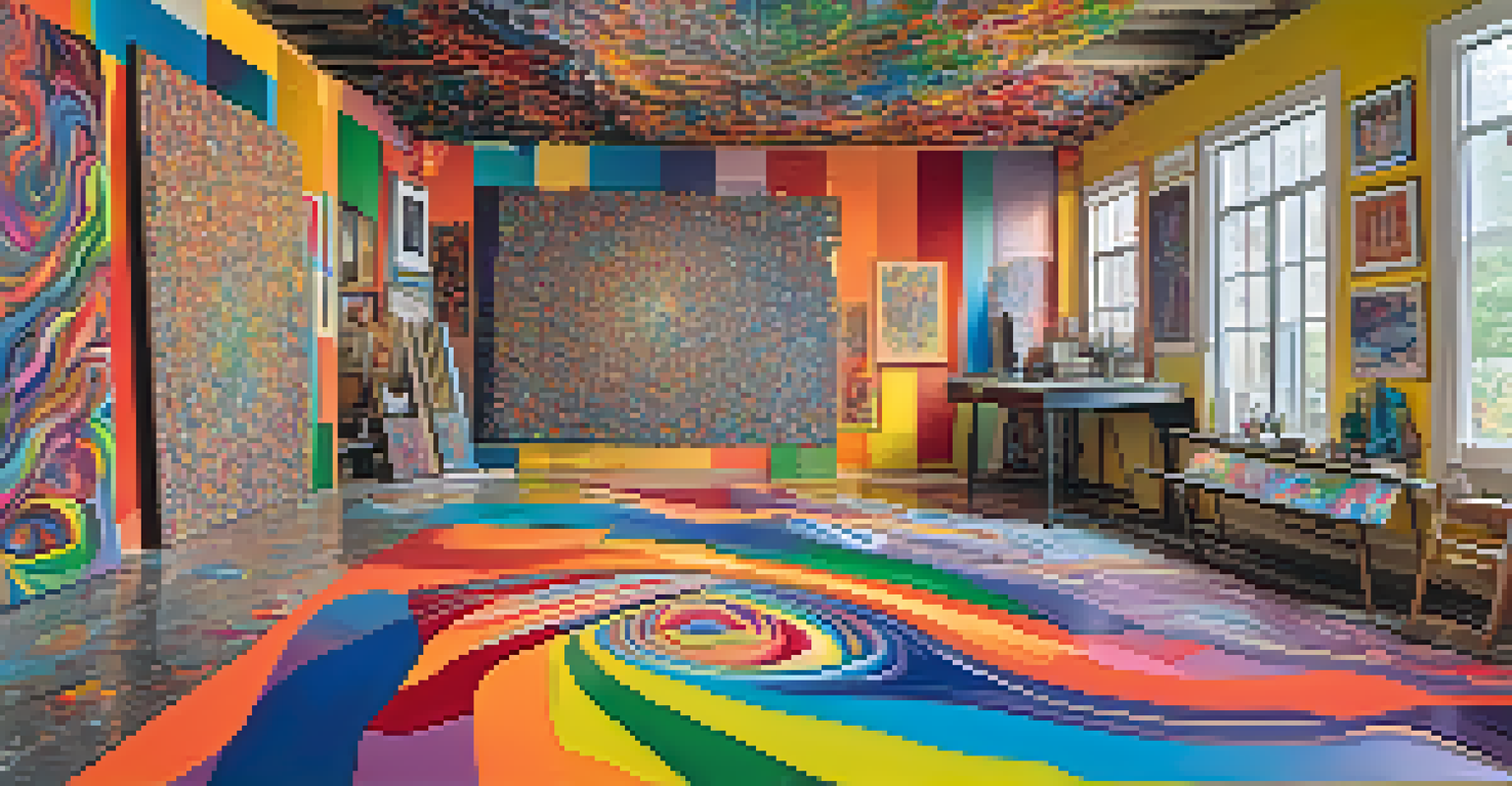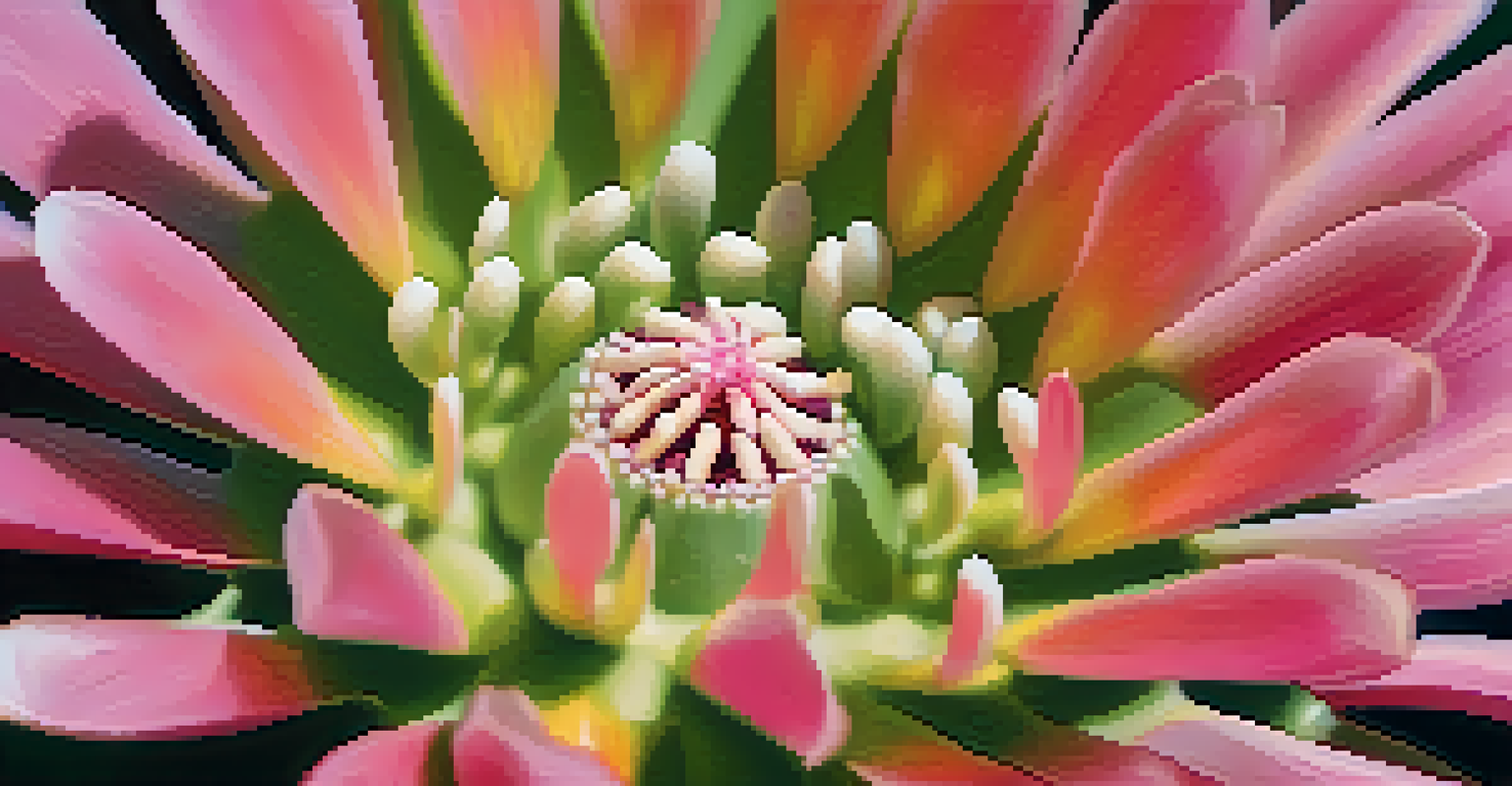The Influence of Peyote on Art and Literature

Understanding Peyote: A Brief Overview of Its Significance
Peyote, a small cactus native to Mexico, has been used for centuries by Indigenous peoples for its psychoactive properties. This plant is not just a recreational substance; it's a sacred element in many spiritual practices. When consumed, peyote can alter perceptions and deepen connections to spirituality, making it a vital part of cultural rituals.
Psychedelics can help us to see the world as it truly is, to access the hidden layers of reality that are usually obscured from us.
The significance of peyote extends beyond the spiritual realm, influencing various forms of artistic expression. Artists and writers alike have turned to this powerful plant as a source of inspiration, using their experiences to explore deeper themes of existence and consciousness. Through these creative lenses, peyote's impact becomes a bridge between the mystical and the tangible.
As more people become aware of peyote’s cultural importance, its role in art and literature continues to grow. In this article, we will delve into how peyote has shaped creative works, influenced famous artists, and sparked conversations around identity and spirituality.
Psychedelic Experiences: A Catalyst for Creativity
The psychedelic experience induced by peyote often leads to profound insights and visions that can inspire artists. Many creators report heightened states of awareness, enabling them to see the world through a different lens. This shift in perception can result in unique artistic styles and groundbreaking literary themes.

For example, the abstract art movement of the 20th century was significantly influenced by artists experimenting with psychedelics, including peyote. They often sought to convey their altered states of consciousness through vibrant colors and shapes that defy traditional representation. This experimentation opened new pathways for artistic expression and challenged the norms of the art world.
Peyote's Cultural and Spiritual Role
Peyote is a sacred element in Indigenous cultures, used in spiritual practices and artistic expressions.
Literature too has been enriched by the introspective journeys prompted by peyote. Writers have used their experiences to craft narratives that explore the boundaries of reality, often blurring the lines between the mundane and the extraordinary. This fusion of perceptions has led to an expansion of storytelling techniques that resonate on deeper emotional levels.
Famous Artists and Their Peyote-Inspired Works
Several renowned artists have openly embraced peyote as a source of inspiration. One notable figure is the American painter Georgia O'Keeffe, who spent much of her time in New Mexico, a place rich with Indigenous culture and peyote traditions. Her works often reflect the vibrant landscapes and spiritual essence of the region, hinting at her connection to the natural world and its deeper meanings.
Art is a way of recognizing oneself and the world, echoing the connections we share with nature and the universe.
Another influential artist, the writer Aldous Huxley, famously documented his experiences with peyote in his book, 'The Doors of Perception.' Huxley’s exploration of altered states became a defining text for those interested in the intersection of psychedelics and philosophy. His insights into perception and consciousness have inspired countless artists and thinkers to explore similar themes.
These examples illustrate how peyote has not only influenced the artists' personal journeys but has also left a lasting mark on the art world. By channeling their experiences into their creations, these artists have opened up discussions on the nature of reality and the human experience.
Peyote in Literature: Themes of Identity and Spirituality
Literary works inspired by peyote often delve into themes of identity, spirituality, and the quest for understanding. Authors draw upon their experiences to explore the relationship between the self and the universe, offering readers a glimpse into altered states of consciousness. This exploration often leads to a deeper understanding of one's place in the world.
For instance, the novel 'One Hundred Years of Solitude' by Gabriel Garcia Marquez reflects elements of magic realism, a genre that aligns closely with the experiences of those under the influence of peyote. The blending of fantastical elements with the ordinary invites readers to question the boundaries of reality, much like the psychedelic experience itself.
Influence on Art and Literature
Peyote has inspired numerous artists and writers, leading to unique styles and themes that explore consciousness and identity.
Moreover, Indigenous authors have used peyote as a means to reclaim their narratives and express their cultural heritage. By weaving their experiences with peyote into their storytelling, they highlight the importance of spirituality and tradition, enriching the literary landscape with their unique perspectives.
The Role of Peyote in Indigenous Art and Culture
For Indigenous peoples, peyote is not merely a substance; it is a central component of their cultural identity and artistic expression. The ceremonial use of peyote is often depicted in their art, reflecting a deep reverence for nature and spirituality. This connection between peyote and artistic expression emphasizes the importance of cultural preservation.
Through traditional art forms, such as beadwork and pottery, Indigenous artists convey their stories, beliefs, and relationships with the natural world. The imagery often incorporates elements of peyote, symbolizing not just its psychoactive properties but also its role in their cultural rituals. This artistic representation serves as a powerful reminder of their heritage.
As Indigenous artists gain recognition, the influence of peyote is celebrated as part of a broader movement to honor and respect the traditions of these communities. Their work encourages a greater understanding of the significance of peyote, fostering appreciation for the rich cultural narratives that shape their art.
Contemporary Art Movements Influenced by Peyote
In recent years, we’ve seen a resurgence of interest in peyote within contemporary art movements. Artists are increasingly exploring themes of psychedelia, spirituality, and nature, often drawing inspiration from their experiences with peyote. This revival reflects a growing desire to connect with deeper aspects of the human experience.
For example, the rise of the visionary art movement celebrates the interconnectedness of all beings. Many contemporary artists in this movement use psychedelics, including peyote, as a tool to access higher states of creativity and awareness. Their works often feature intricate designs and vibrant colors that invite viewers to engage in a shared exploration of consciousness.
Resurgence in Contemporary Art
Contemporary artists are increasingly incorporating peyote into their work, reflecting a renewed interest in its themes of spirituality and nature.
As these contemporary artists continue to push boundaries, peyote remains a vital source of inspiration. By synthesizing traditional motifs with modern techniques, they create a dialogue that honors the past while exploring new frontiers in artistic expression.
The Future of Peyote in Art and Literature
As society becomes more open to discussing psychedelics, the future of peyote in art and literature looks promising. New generations of artists and writers are eager to explore its potential, seeking to understand and convey their experiences in innovative ways. This evolution could lead to a richer tapestry of creative works that resonate with diverse audiences.
Moreover, the conversation around the decriminalization of peyote and its cultural significance continues to gain momentum. As awareness grows, so too does the opportunity for artists to engage with peyote in responsible and respectful ways. This shift could pave the way for more inclusive narratives that honor the traditions of Indigenous peoples.

Ultimately, peyote’s influence on art and literature is likely to expand, fostering a deeper exploration of consciousness and creativity. As we move forward, it’s essential to recognize and respect the cultural roots of peyote, ensuring that its legacy continues to inspire future generations of artists and writers.